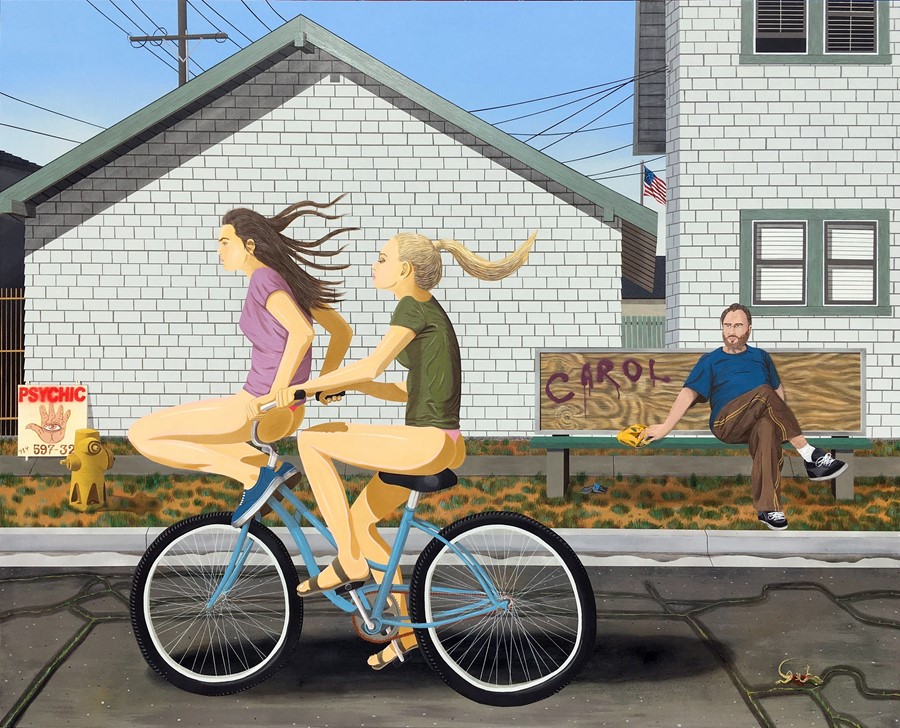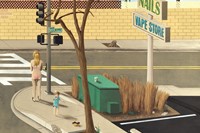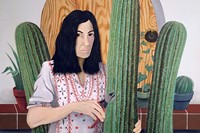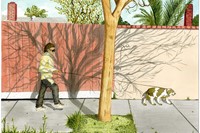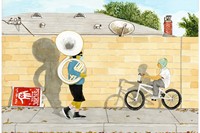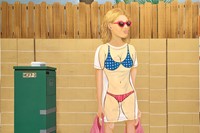As his new exhibition opens at Roberts Projects in Los Angeles, Ed Templeton talks about his new series of paintings that explore the weirdness of American suburbia
“I feel like I’ve hit a stride with this series,” says Ed Templeton from his home in southern California’s Huntington Beach. The artist and skateboarding hall-of-famer has resided in this surf-haven for some 40 years, during which its endless tract housing and sun-baked sidewalks have inspired his skating exploits as much as his art. For his latest exhibition at LA’s Roberts Projects, Templeton has produced a new body of painting and photography that he feels surpasses anything he’s made previously; a level change he attributes to the unbroken period of focus afforded by lockdown. While the paintings have reached new heights, the source material remains familiar, with Templeton mining the same inexhaustible weirdness and unique suburban psychology of Huntington Beach that he first brought to international attention with his breakout 1994 photo series, Teen Smokers.
His new exhibition, The Spring Cycle, offers a nuanced dissection of the area’s so-called “provincial customs and rituals”. Working from his own photographs, something he never previously allowed himself, the paintings offer a condensed mise en scène of daily life in one of California’s few conservative coastal strongholds. Littered with symbolic references that reflect Templeton’s fluency in a visual urban language, religious pamphlets, psychic advertisements and other street jetsam make up a richly layered narrative on the cracking facade of American suburbia. Having mastered new techniques in the execution of these paintings, Templeton is a man on top of his game, with a newfound deftness to his craft that promises much more to come.
“I’ve used the term ‘hyperbolic reality’ [in this exhibition], so the idea of driving down the road in the suburbs and seeing something from the car that you can’t get a good photo of except from with an iPhone. Then the next block you see something else and so you add all five of those elements that you saw over maybe a week into one painting, little aspects, to make an exaggerated reality. It’s like reality, it’s probably not as sensational as some of the paintings look, but all those elements are truthful. They are real things that you see here, it’s just you don’t usually see them all in one shot.
“I always used [my photography] to some extent, but hated the idea of directly making a painting from a photograph. But I realised that these are my photographs, so it’s not weird that I’m copying someone else’s work. I also realised that I have all these computer skills, doing skate graphics and designing books and stuff, so I can take my photographs and use different elements of them to create a composite which I then draw by hand and then use that for the work. So the development in my paintings came from becoming better at planning them and knowing how to sharpen up the original source material.
“I’m trying to explore the facade of the suburbs and the idea of them being built as the place to get a house and raise some kids, as this safe, gated community kind of thing. So pulling up that rock and seeing what’s underneath it. Venice [Italy] is a great example. It’s like the whole of downtown is a tourist wonderland and it’s hard to find something authentic until you get lost and walk down some random streets. Then you start seeing little things and that’s the language I like to see: what’s written on the walls? What trash is on the ground? What are people yelling out the windows? What dudes are hanging around? All that stuff is so interesting.
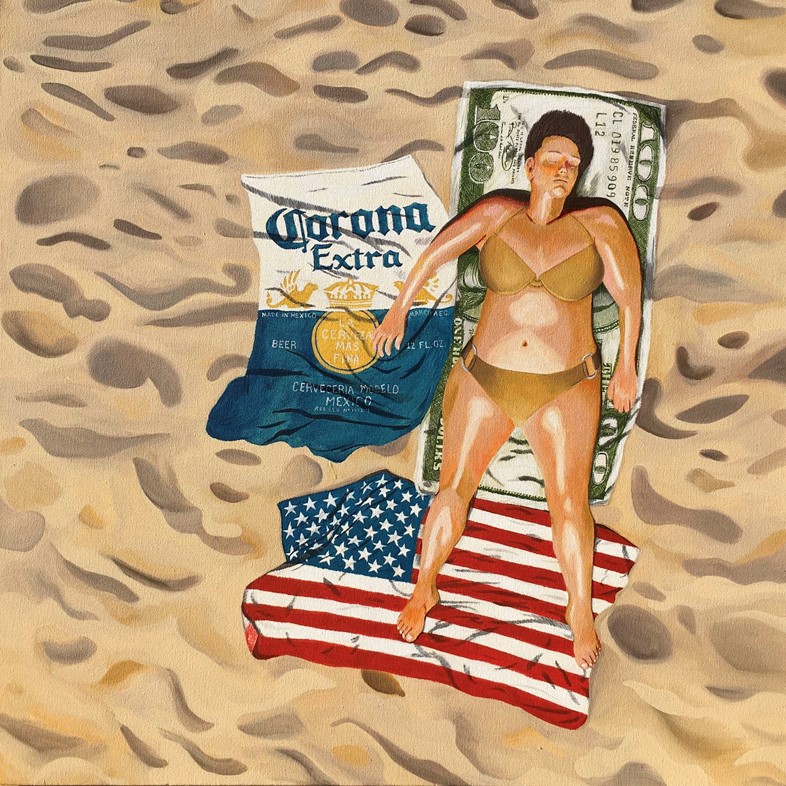
“For me, the relationship between [painting and photography] was previously pretty separate. I would paint on my photos sometimes and write on them but it usually didn’t go the other way round until around 2018. They both inform each other now. Sitting there painting is just hours of thinking about what you’re doing physically, making marks but also thinking about the painting and what it means as a story. So those deep meditations end up informing my photography and the photography obviously informs the painting. So at this point I feel like both things have a completely symbiotic relationship.
“The Spring Cycle comes from the name of that one painting of the girls riding the bike, which I came up with in a literal sense like, ‘OK, spring is happening, girls are starting to get in their bikinis and go to the beach.’ But then I like the idea of naming the whole body of work The Spring Cycle because there’s a little bit of a rebirth. I feel like I’ve hit a stride with this series that started in 2018 and is now finally reaching a level where I think it should be.”
The Spring Cycle by Ed Templeton is on at Roberts Projects in Los Angeles until 5 March 2022.
